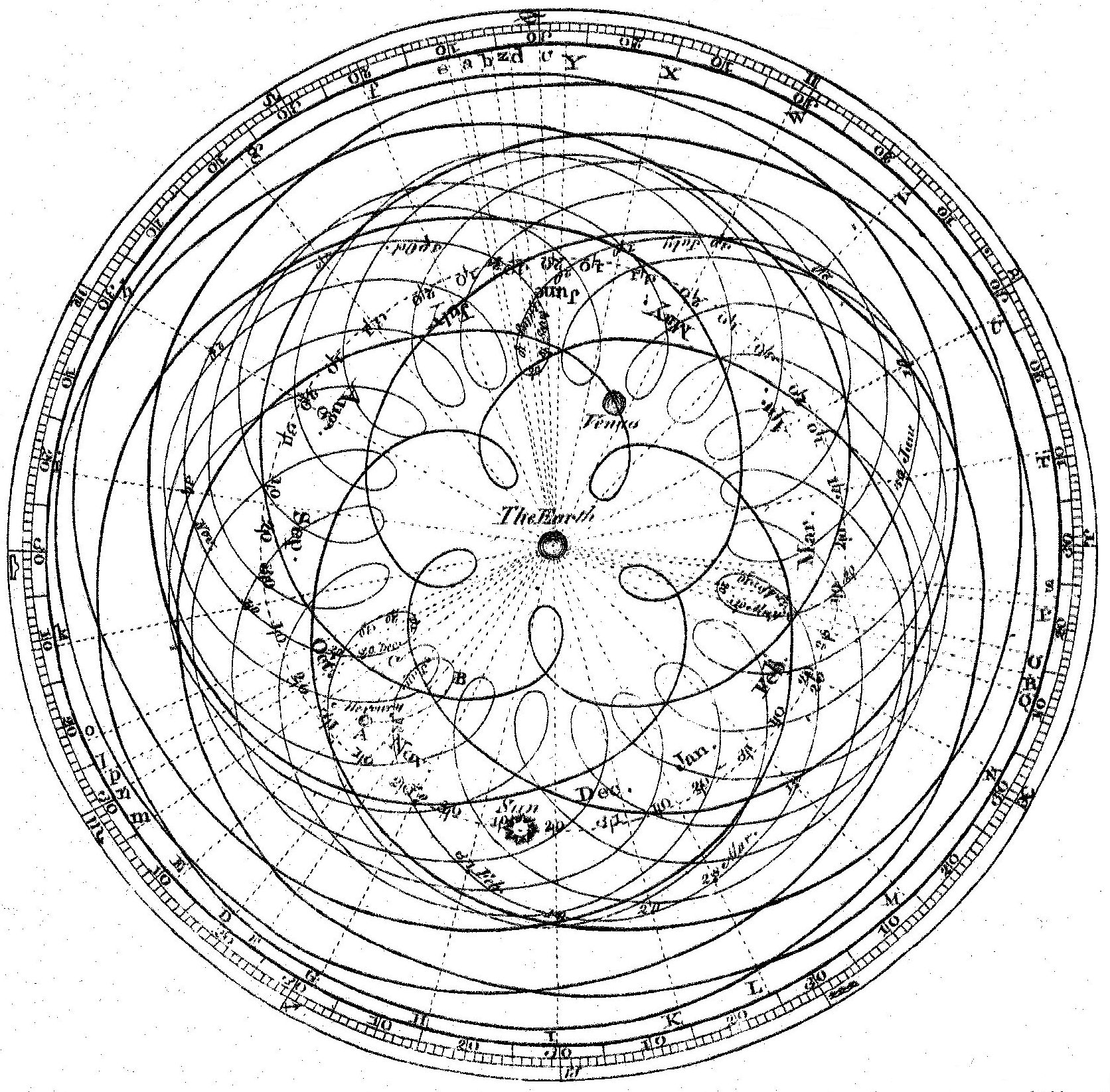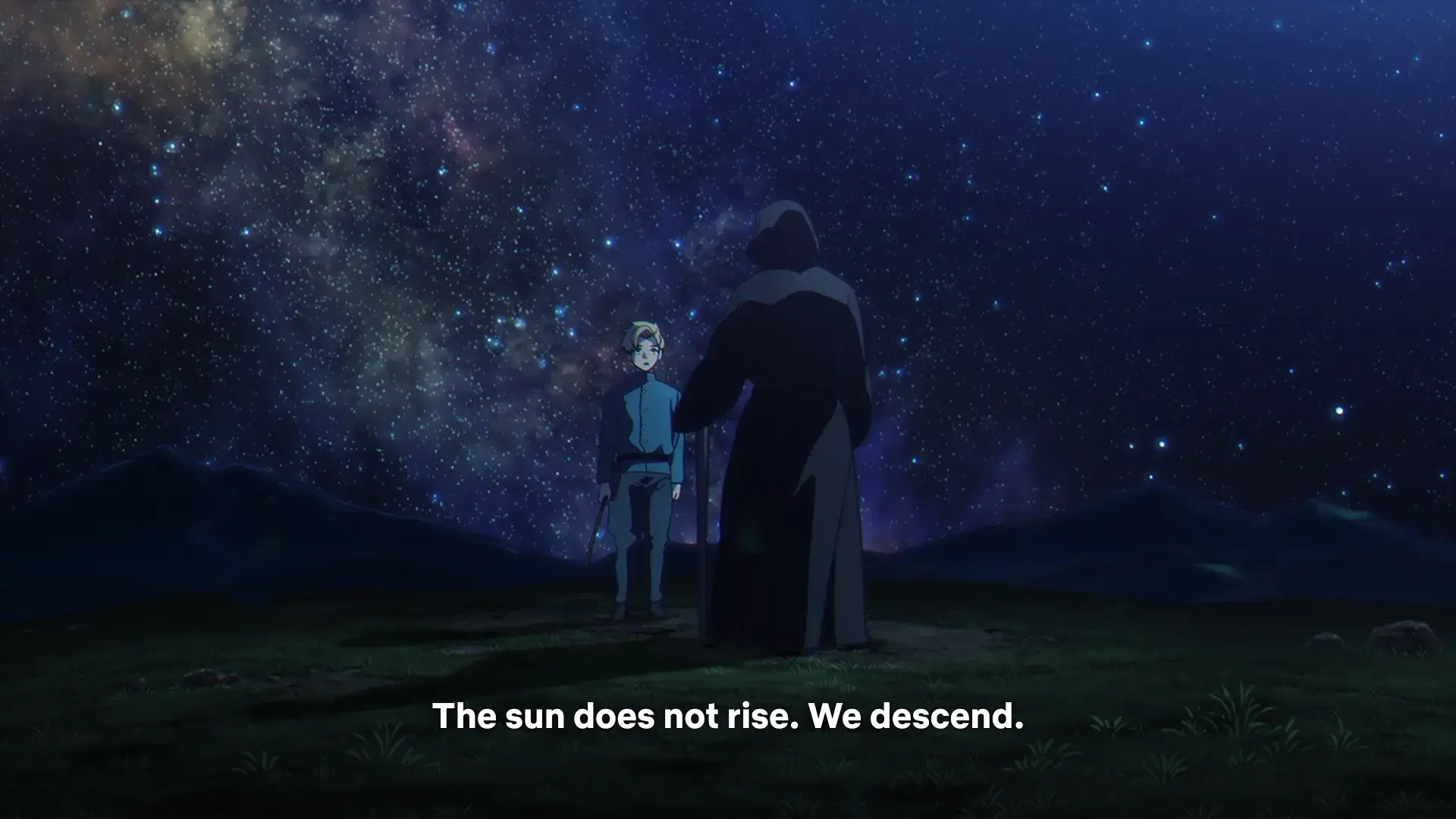Alright, so we have an entire anime about heliocentrism. I have taught astronomy courses in the past and have a bit of interest in the history of science, so this is right up my alley. There were a couple things they brought up in this first episode that people might not be familiar with:
- Aristotle's theory of gravity
Aristotle (4th century BCE) believed that everything had a natural place in the cosmos, and gravity was the force that pulled it to that place. In his worldview, earth's natural place was at the center because it was the heaviest, water's natural place was to sit on top of earth, air on top of water, fire on top of air, and then the celestial sphere above that with heavenly bodies like the moon embedded on that sphere.
This was a tool that dates all the way back to ancient Greece. The tool has many different uses (literally hundreds), but primarily was used in astronomy for precisely measuring one's latitude, the elevation of an object in the sky, determining the time of day, measuring the height of objects, etc. It was a tool that was a go-to for any natural philosopher to have and ended up with many religious applications as well such as calculating eclipses, equinoxes, etc.
Believe it or not, this ancient Greek astronomer theorized the heliocentric model of the solar system a full ~1800 years before Copernicus would publish his work. Unfortunately his writings have been lost to time and we only have some small quotations and references to it that survive in later works. There were occasional astronomers that would come in the centuries following that would resurrect the heliocentric model, but it never reached enough of a critical mass to take hold of scientific consensus. The consensus until Copernicus was originally developed by...
Ptolemy was an ancient Greek thinker that proposed a model of the solar system that happened to support the theology of the newly forming Catholic church, which went on to promote the Ptolemy geocentric model and its epicycles as literal Gospel basically. In Ptolemy's model, the Earth was at the center of the solar system and the other heavenly bodies (moon, planets, sun) moved in these complex loops that wrapped around in a circle while the distant stars were stuck on a celestial sphere encompassing everything that rotated. These complex epicycles were created to explain the occasional periods where planets would move backward in the sky relative to everything else, called retrograde motion. This is the model of the solar system that Rafal drew in the dirt near the end of the episode. Here is that same type of diagram from Wikipedia:

Science lesson over! I will echo @[email protected] in that one thing I didn't enjoy about this episode was the torture scene that it started out with and then the later burning a heretic at the stake. So, not looking forward to more of that going forward. However, the scientist within me is burning (figuratively) to keep watching.



